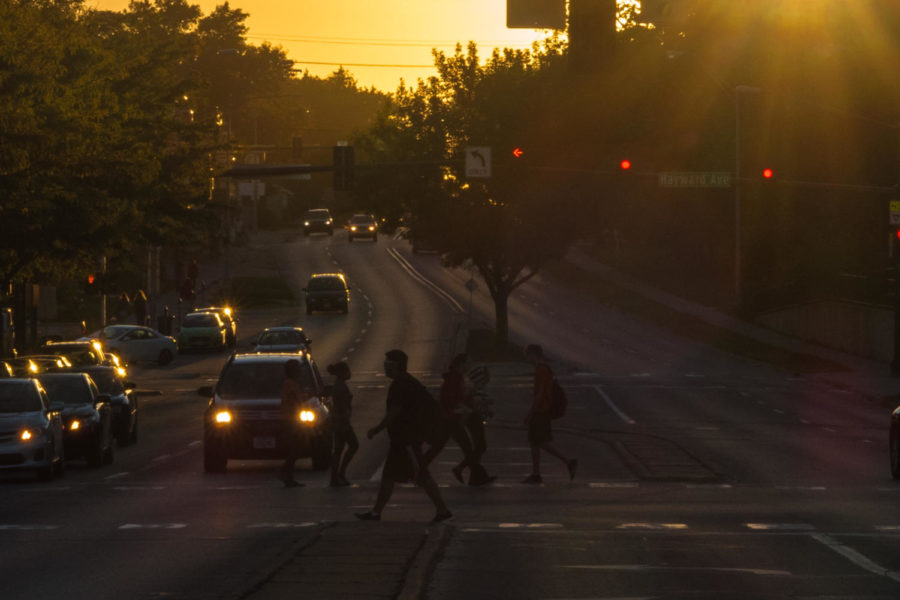Editorial: Pedestrian safety deserves Ames’ attention
Pedestrians cross Lincoln Way at Welch Ave on Sep. 11.
January 24, 2017
Down on the corner of Oakland, Sheldon and Hyland — just a block or so west of the College of Design — exists a unique solution to what would otherwise be a nightmarish, traffic-lightless pedestrian crossing.
A solar-powered, flashing, yellow crosswalk sign is situated on either side of N. Hyland Ave. After having stepped up to the intersection, a pedestrian could wait for the signal to walk, and then step across the street, snug and buttoned-up and unmolested while these two beacons of warning — facing toward oncoming traffic on either side — flash their yellow brights mightily in the face of approaching drivers.
It’s almost a pleasure to watch as the cars on either side slow, and the worried-looking engineering student — just wanting to make it to his 9 a.m. on time — nervously clutching his cellphone and backpack, safely shuffles across the street and continues on his way.
Such wasn’t always the case. Such isn’t always the case. There are many street crossings in Ames that are virtually unnavigable for foot traffic, or, at the very least, made far more dangerous than they ever should have been.
Take, for example, many of the crossings that stretch across Lincoln Way or down the Duff strip on the eastern side of Ames.
Though, granted, at varying intervals there are stoplights and crossings in these areas, they are anything but reliable, and any would-be crosser must take their life and place it in the hands of each impatient automobile-born soul who wishes to turn right on red or left with no green arrow and is particularly inattentive in doing so.
Ames needs more of its pedestrian byways made safer by some mechanism — possibly even some creative solution like the brightly-lit warning beacons on either side of Hyland — that could go toward making our street crossings safer for the walking public.
Presumably, this was one of the ideas the designers had in mind upon the conception of the planned community north of campus called “Somerset.” Alongside Stange Road, the main north-to-south thoroughfare in this area of town, there are wide sidewalks and conspicuously placed crosswalks.
Unfortunately, Stange, being such a well-trafficked road, provides for an actually dangerous place for a pedestrian to try and cross. And the community is not helped by the wide, four-lane street and its curved nature, which allows for poor visibility.
In light of these considerations, this editorial board believes that more attention ought to be given to pedestrian safety in Ames. Horrible accidents aside, there is no reason the city should be unsafe for foot traffic, especially given the large population of car-less college students whom the infrastructure serves.
















